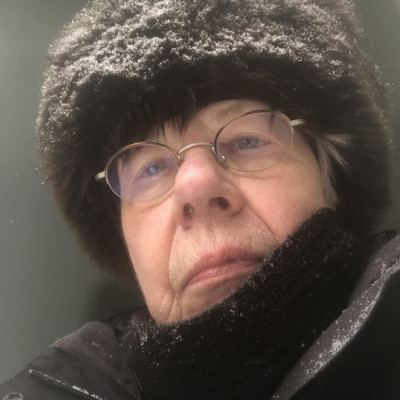SEARCH






|
|
|
|


Cultural anthropology studies the social behaviour, the economic structure, religion and culture of populations and communities and processes of social change. Research into ethnic cultures in remote areas or into minority groups in your own society can be the subject of these studies.
Since its invention photography has played an important role in ethnographic research for quite some time. The oldest photographs in the collection of the Museum of Ethnology in Leiden, for example, stem from 1860. The early photographs were mostly taken in a colonial context. They were not only valued by anthropologists who never travelled to distant places, but also by the organisers of the biennial World Fairs and private buyers.
Around 1900, for example, there were in the former Dutch East Indies - now Indonesia - more than 130 photo studios of professional photographers of Dutch, English, Chinese, Japanese and even one of Russian-Armenian descent https://en.wikipedia.org/wiki/Ohannes_Kurkdjian. They earned their money by making portraits of colonials and the native aristocracy and the sale of photographs of native landscapes and architecture to individuals.
The advent of handheld cameras as Leica and Rolleiflex reduced the role of professional photographers. Anthropologists and colonialists themselves now made the pictures they wanted and returned home with hundreds, sometimes thousands of photos. It is ironic that at the same time photography lost its importance in the anthropological research. The word took over. Observations and analysis of structural and functional cultural characteristics could be described better and subtler in sentences than in images. Images represent a moment, words provide a context.
It wasn't the end of ethnographic photography. Far from it! It is just that the role of the pioneering professionals and the photographing anthropologists has been taken over by photographing travellers.
Genuine interest
They travel because they want to see and understand more of the world, to discover how remote people live - like Jan Møller Hansen did when photographing the nomadic Rautes of Nepal - see also https://janmoellerhansen.smugmug.com/The-Hunters-and-Gatherers-of-t/.
In his series Jan shows us a glimpse of the way the Rautes live. In all its rawness, without finery or glamour, and full of respect and empathy for, and genuine interest in the people he photographed.
Empathy
The empathy that characterizes the work of Jan Møller Hansen, is also to be seen in the photographs - https://1x.com/member/joehandsome/albums/6795 - Martin Johansson made of members of some Romani families living in Arles (France). He stayed for several hours with the families who, in Martins words: "were generous to let me take pictures of them."
The series not only shows that the families trusted Martin, but also that he felt connected to them. There is communication with them and with us viewers.
He makes us feel how hard life has been for these families. You see the scars of hardship in their eyes. It is especially visible in the portrait Martin, with great empathy, made of a Romani mother.
Glimpses of daily life
Insofar I can oversee a majority of ethnic documentary photographers visits - often forced by circumstances - only those settlements of indigenous tribes which are operated by tour operators. These places are flooded with tourists for whom members of the tribe pose and perform. As a result there are few photos that give us a glimpse of the daily lives of the tribes. To get an idea of the daily life of indigenous tribes, their rituals, ceremonies and religion a photographer - basically as an anthropologist - should be part of their society for quite some time.
Geoff Husa is a photographer who has this opportunity. He and his family have lived and worked in a remote tribal location, among the Mibu people, high up in the cloud forests of Papua New Guinea since early 2004. He speaks their language, their culture, their values, made friends.
The photo " 'Lousy' Family Time" shows that his protagonists know and trust him and pay no attention to the camera. Sure, the children like all children look straight into the camera. The are curious and intrigued, but the mother just goes on delousing.
In Geoff's words:" Lice is one of the unpleasant parts of living life in a remote location in Papua New Guinea. It's so common that this is just an everyday practice usually done during an otherwise non-busy time and makes for some great time spent with the family. "
Breakfast
Where ever you live, in the north or the south, the east or the west, mothers and wifes prepare breakfast. It is a very daily life subject. By the way, wouldn't it be a wonderful world wide project to photograph cooking breakfast?
Ben McRae caught Tjatunga, a member of the Namibian Himba tribe, cooking breakfast at the very early hours of the morning. The sun hasn't yet risen, the cattle is still around in the village. A lovely and peaceful scene, which shows that Tjatunga is completely at ease. She pays no attention to the photographer, who must have been busy with his gear and finding his point of view. There is a atmosphere of mutual trust and respect, which can only be created if one spends quite some time among the villagers and when the village isn't yet invaded by tourists.
Tourists
The traditional living tribes of Ethiopia, Namibia, Tanzania and Kenya are much visited by mostly western tourists, who genuinely want to experience their traditions, rituals and ceremonies or who just come, take their pictures - for which they, to their indignation have to pay and go. There isn't much mutual respect. For the tribes the tourists are, in Ben McRae's words:" (...)walking cash dispensing machines", for the tourists the members of the tribe are but objects. It leaves both parties with mixed feeling as can be seen in a documentary - http://www.2doc.nl/speel.WO_VPRO_861314.html - about the encounter between members of a tribe and tourists.
In a way visiting a tribal settlement can be a bit of a tourist trap.
When Piet Flour visited a Masai village in Kenya and took this beautiful, intense portrait, he made the following observation:" for some those villages may look too fake, other will think it's all real ... probably it's a mix of both. The life and culture is changing very fast. The dancing is mostly for special occasion, and daily for the tourists, but they are for most of the time still living in those huts. And every day the cattle is still driven in the plains, and then again in the village's coral of branches".
True words and possibly many traditions are preserved because of the money the tourists bring in. After all, in several parts of the western world some of the traditions and folklore would have been long forgotten if they hadn't attracted the interest of tourists.
In a way watching the performances of a - let's say Rumanian -folklore dance is much the same as attending a Hamar dance. In both cases attending it, can be a rewarding experience and judging by Mohammed's picture, the Hamar dance was.
One of the things I like most in this photograph is the little boy at the right. He is trying so hard to join the dance of the women, while the men at the background pay no attention at all. Well perhaps they are preparing for their own performance.
Portraits
To conclude this review I would like to show you two wonderful portraits in which the eyes attracted my attention more than the traditional signs of beauty as experienced by respectively the Ethiopian Muro and Karo tribe. I let them speak to you for themselves.
 | Write |
 | Delphine Devos A very interesting article with great photos Susanne.
Thank you to the photographers who share these moments for us. |
 | Yvette Depaepe CREW Most interesting review and fantastic images, Susanne. Congratulations... |
 | Susanne Stoop Thanks, Yvette! |